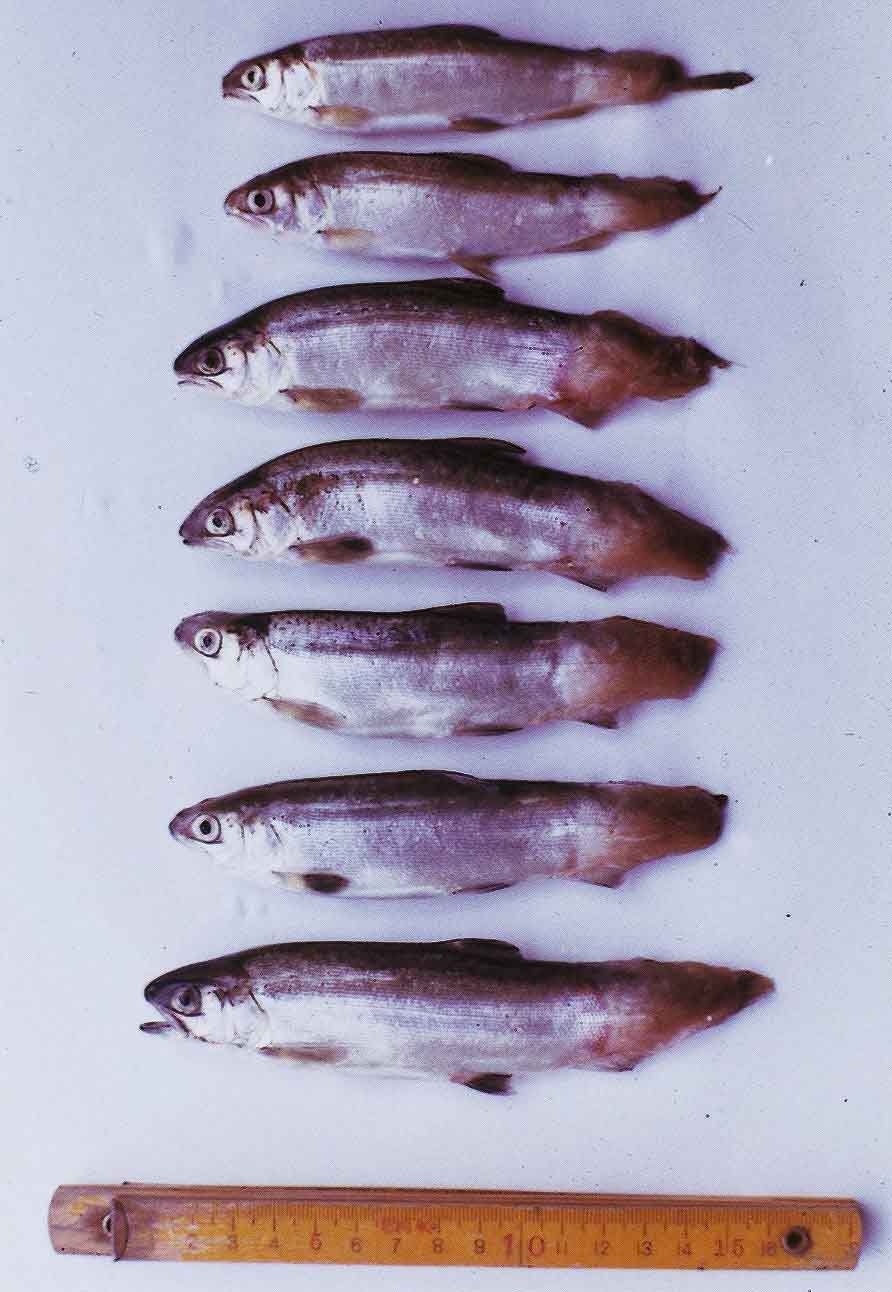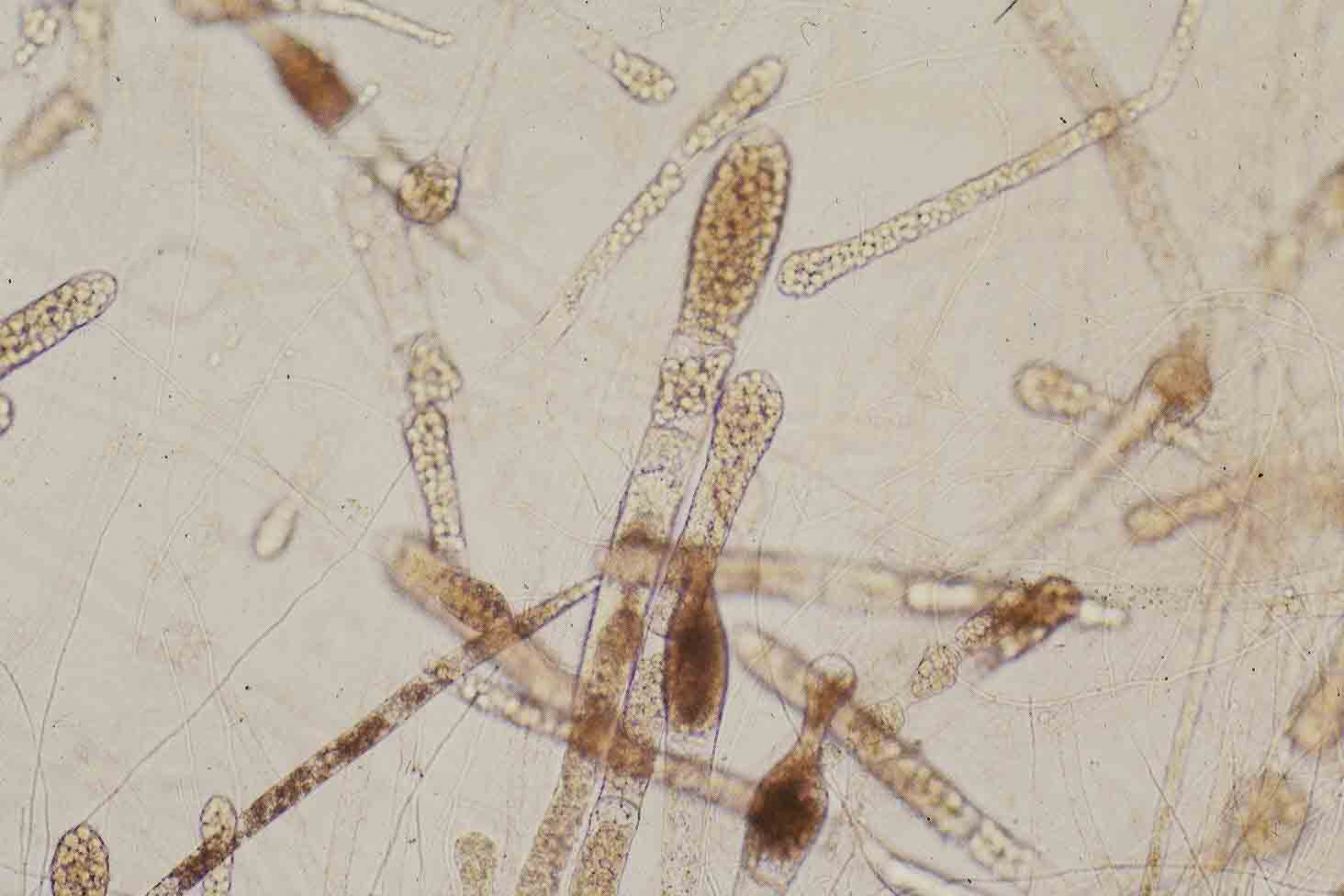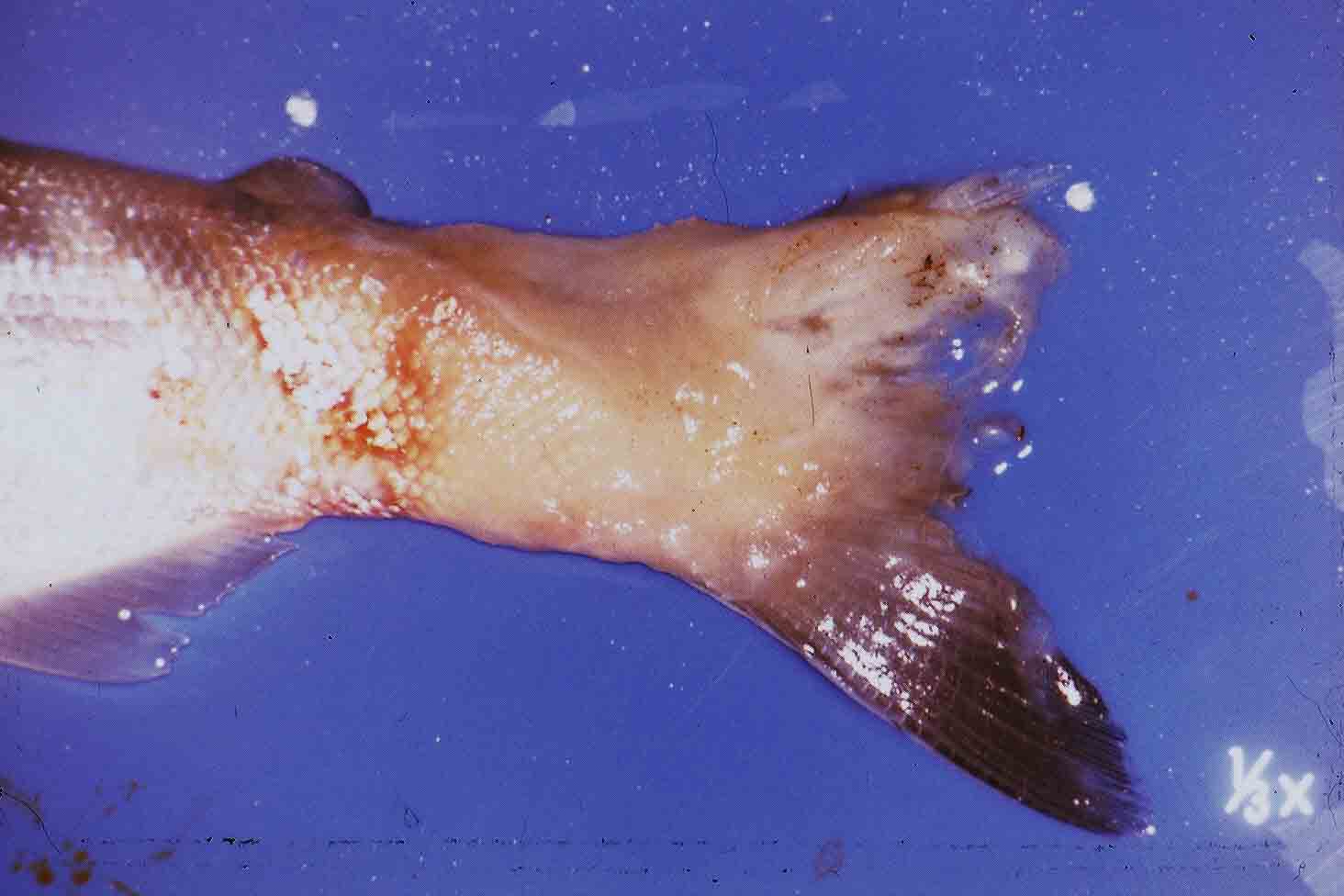
| Pathogen | Saprolegnia parasitica |
|---|---|
| Taxonomy | Oomycota, Oomycotea, Saprolegniaceae |
| Hosts | Salmonid fishes, ayu (Plecoglossus altivelis), Japanese eel (Anguilla japonica), common carp (Cyprinus carpio) |
| Infection site | Skin, fin |
| Clinical signs | Filamentous mycelia are observed on the head and fin (Figs. 1 and 2). |
| Fungiology | The asexual spore or sporangium is formed at the end of hyphal cells on the body surface of a host and can release motile zoospores. These primary zoospores swim before they encyst and release a secondary zoospore which infects a host. In rare cases, the fungus forms an oval oogonium followed by sexual reproduction (Hatai, 2004). |
| Pathology | Diseased fish exhibits epidermal loss and Saprolegnia parasitica penetrates deeply into the muscle. As a result, the host is led to the death due to osmoregulatory failure (Hatai, 2004). |
| Health hazard | Since this fungus is not infectious to human, it is harmless in food hygiene. |
| Diagnosis | Check the mycelium in the lesion (Fig. 3). |
| References |
Hatai, K (2004): Fungal
diseases. Infectious and parasitic diseases of
fish and shellfish. (ed. by Wakabayashi, H. and K. Muroga), Koseisha koseikaku, pp. 263-284. (In Japanese)
|

(Photos by T. Awakura)
Fig. 3. Mycelia of Saprolegnia shikotsuensis

Fig. 2. Damage of the caudal fin caused by the fungus

Fig. 1. Sockeye salmon fry infected with the fungus